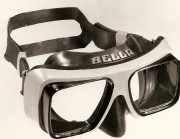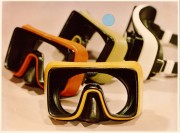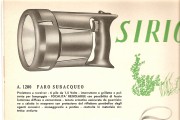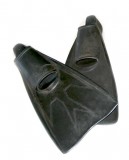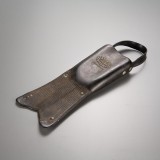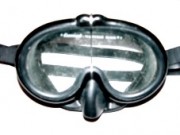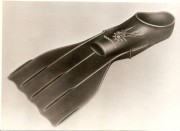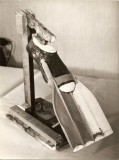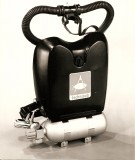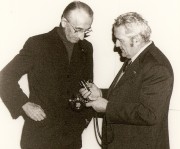Inventor and Entrepreneur
Inventor
Rondine Fins
|
The Rondine fins were Luigi Ferraro's first invention in the diving equipment sector to succeed at an international level. In the 50s, fins were very different from those we know today. Even though they assisted movement to a certain extent, they were short, uncomfortable, painful and, most of all, not very efficient. They were based on a patent lodged by Louis de Corlieu in 1933 describing hand paddles and fins for which he got his inspiration from the fins that Polynesian fishermen manufactured with leaves. They were offered to the French Navy in 1934 and to the British Admiralty in 1935 who refused them as they did not see their potential. The Italian Royal Navy, on the other hand, were the first to realise their operational capabilities, adopting them for its underwater commandos, the Gamma Group of the X Mas. Ferraro was one of them who, wearing his fins, carried out extraordinary operations during the Second World War earning the Gold Medal for Military Valour. Firstly, based on these experiences, Ferraro drafted the theoretical outline of the fins' operation, which he published in "Mondo Subacqueo" in 1950. This was the first magazine in the world specific to the diving sector and was a single publication. The first chapter "The swimming fins" of the book "Dominare gli Istinti" by G.Cafiero - Ed. Ireco, is dedicated to this study. In 1952, following careful studies, calculations and prototypes, a fin benefiting from the technological revolution was invented: the Rondine. It combined physical, chemical and mechanical innovations guaranteeing performance that was decidedly superior to the fins in use up to that time. However, their success was especially due to their fitting solution: a small shoe made of soft rubber, which accommodates the whole foot. It guarantees maximum comfort, merging the foot and the fin into one. All contemporary full foot pocket fins derive from the ergonomic principles Ferraro applied to the Rondine fins. |
|
Pinocchio Mask
|
Another of Ferraro's inventions that was destined to leave a permanent mark in the evolution of diving equipment, is the Pinocchio mask, which again, he designed for Cressi in 1952. The Monogoggle, the prototype of all masks, was a French invention that only covered the eyes and excluded the nose. For this reason, it was not able to compensate for external pressure. The next generation of diving masks improved comfort and were more effectively sealed but could not resolve the problem of pressure compensation as the nose was still covered by the glass. Ferraro was the first man to design a rubber face shield which is soft and, as it covers the nose, enables the wearer to easily compensate for external pressure on the eardrum. His invention was successful worldwide, not only because of the feature mentioned above, but also because of its reduced size, its excellent adhesion to the face and its good visibility. A veritable "cult" within the diving mask field, Pinocchio was the most famous mask in the world. Venerated by generations of divers, it was such an advanced design when it was introduced on the market that it is still valid today, over fifty years later. Pinocchio is still produced by Cressi Sub today and it is certainly the diving product that has been on the market the longest. |
|
Caravelle Fins
|
They were presented to the market in 1963 and therefore represent one of the first articles that Ferraro designed for Technisub, the company he founded the previous year. The Caravelle fin has two characteristics that set it above all other existing fins: it is composed of a shoe and a blade that are made from different materials. |
|
ARO
|
The Breathing Apparatus that Ferraro conceived in collaboration with Prof. Zannini, has very little in common with the apparatus he used during the war. In the new product, the gas follows a cyclic path rather than a pendulum flow for better CO2 capture. It can operate either by manually activating the by-pass for the inflow of oxygen, as in traditional rebreathers, or completely automatically, so that the diver is left with his hands free. The breathing bag is protected by a strong protective shell; soda-lime is contained in a transparent cartridge, which can therefore be inspected from the outside and does not need to be dismantled. Many of these features have become standard in modern rebreathers. To know more about ARO Technisub |
|
INJECT Regulator
|
At the end of the 70s, Ferraro patented a new regulator, known as the Inject, which makes use of the Venturi effect. The direction of the airflow originating from the first stage is modified to increase the intake of air to the diver. The flow can be suitably adjusted according to breathing requirements, depth and respiratory work. The Inject series is divided into various models produced by La Spirotechnique. |
|
Entrepreneur
|
On October 13th 1962, Luigi Ferraro and his friend Carlos Reinberg, set up Technisub, his diving equipment factory, aiming to conquer the international market. |


